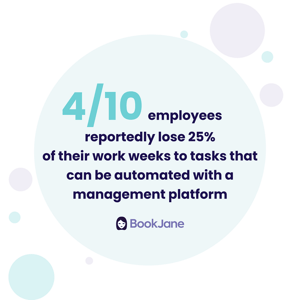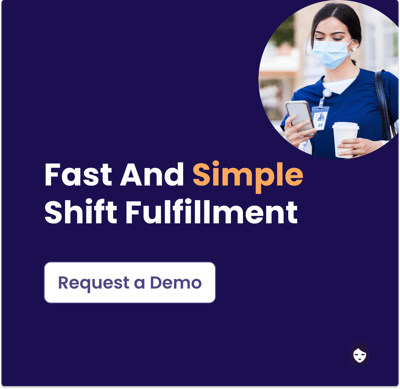Because spreadsheets are so useful in accounting and database management, it can seem like they’re reliable in all business contexts. But they can hamper healthcare workplace productivity when they’re used for tasks or in settings they’re not suited for.  Spreadsheets in healthcare and long-term care homes can be great when applied to procurement or budgeting – tasks that rely on amounts, formulas, and bottom lines – but they’re far less appropriate in human resources. Force of habit leads administrative staff to use spreadsheets to keep track of staff and create schedules, even though there are better tools, apps and methods out there.
Spreadsheets in healthcare and long-term care homes can be great when applied to procurement or budgeting – tasks that rely on amounts, formulas, and bottom lines – but they’re far less appropriate in human resources. Force of habit leads administrative staff to use spreadsheets to keep track of staff and create schedules, even though there are better tools, apps and methods out there.
To assess whether your health care facility or senior living facility should shift out of spreadsheet mode, it’s worth considering the drawbacks and look at the functionality of alternative tools.
Lost Time and Lost Labour
With spreadsheets being so basic to our daily work routines, people have stopped noticing just how much time it takes to create them. All the data has to be entered manually. This is tiresome, repetitive work that could be streamlined and automated by a workplace management platform. Four out of ten employees reportedly lose 25% of their work weeks to these kinds of automatable tasks.
When long-term care homes choose to use spreadsheets to manage staffing and scheduling, these time losses are exacerbated. People lead busy, complicated lives, so shift swaps and changes are a regular occurrence, but it takes time to enter these details into spreadsheets and keep staff informed. Every extra hour a manager spends on scheduling tweaks costs money.
exacerbated. People lead busy, complicated lives, so shift swaps and changes are a regular occurrence, but it takes time to enter these details into spreadsheets and keep staff informed. Every extra hour a manager spends on scheduling tweaks costs money.
Instead, a workplace management software can be entrusted to carry out repeated tasks, such as filling in recurring shifts, generating lists of staff members with availabilities, creating payroll timesheets, and emailing finalized timetables to staff. With alternative tech platforms and apps having the functionality and performing these tasks for you, time and money can be allocated to other areas. How much? Long care homes that adopted BookJane saved $10K in administrative costs over 60 days.
Risk of Error and Information Loss
Manual data entry into spreadsheets doesn’t just take time, it introduces human error. Research audits that looked for errors in real-world spreadsheets showed that, on average, 88% of them contained errors. A problem with data integrity at one level means that everything emerging from that data – from graphs, to tables, and reports – inherits the same flaw. The bigger and more data-heavy the spreadsheet, the harder it is to pinpoint mistakes.
And while spreadsheets might feel data secure, losing or misplacing important information is a common problem. When facilities use spreadsheets for scheduling, updates are often done through cut-and-paste and overwriting older versions. As a result, facilities often lack detailed scheduling records and can’t compare schedules over time. Similarly, separate units and departments in a single long term care facility might have interchangeable staff but keep their own schedules. A workplace management technology platform like BookJane J360 addresses these complexities by incorporating an audit trail that tracks shifts, facilities, and staff history.
Siloed and Static Information
In contrast to smarter technology and tools, spreadsheets don’t have analytical or intuitive functionality. For example, they can’t merge data to determine that particular employees have worked overtime or harness historical data to anticipate staffing needs. And while managers can pore over spreadsheets to identify for scheduling conflicts and overlaps, this could be done much faster and more easily with workplace management software. Because spreadsheets act as standalone information containers, it’s hard to harness, scale, and gain insights from the information they contain.
Once a spreadsheet is created, completed, and saved, the job isn’t over. Administrative staff still need to do something with the spreadsheet, such as print it, post it, or communicate it to staff, which could involve individual emails or phone calls. An alternative tech solution like BookJane J360 streamlines this process by helping to create the schedule in an intuitive, flexible way, and using automated messaging to send the information to staff. Scheduling changes are easily accommodated by the app in real-time and staff are informed through automated follow-up notifications.
Spreadsheets aren’t up to the task for many kinds of workplace functions. Entrusting these tasks to software platforms, such as BookJane for staffing solutions, saves time, money and effort.
To learn more about the benefits of alternative tech tools over spreadsheets for workplace management, visit our products page.
Learn how BookJane helps health care facilities improve shift fulfillment by 40%, dramatically decrease their time to fill shifts, and significantly reduce burdensome scheduling and administration time.





